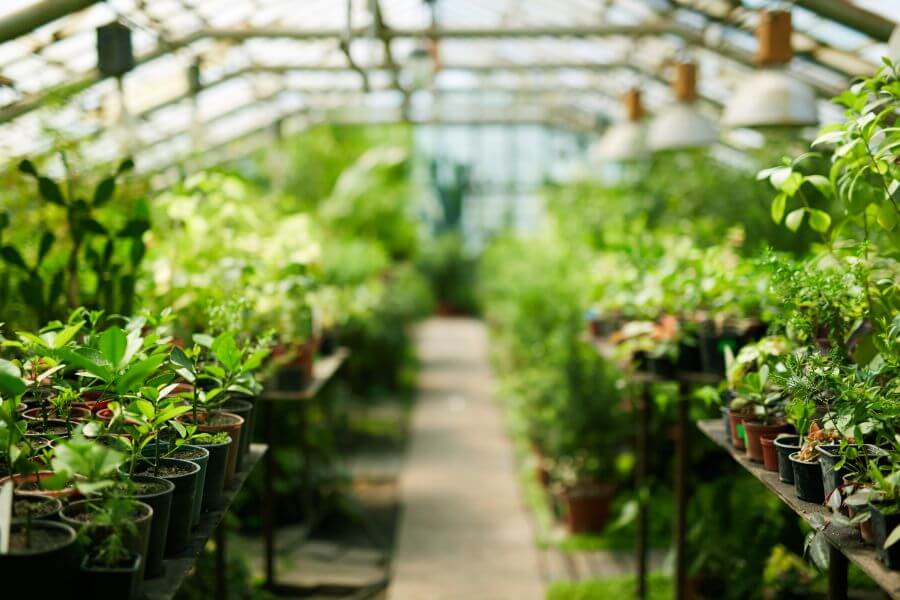
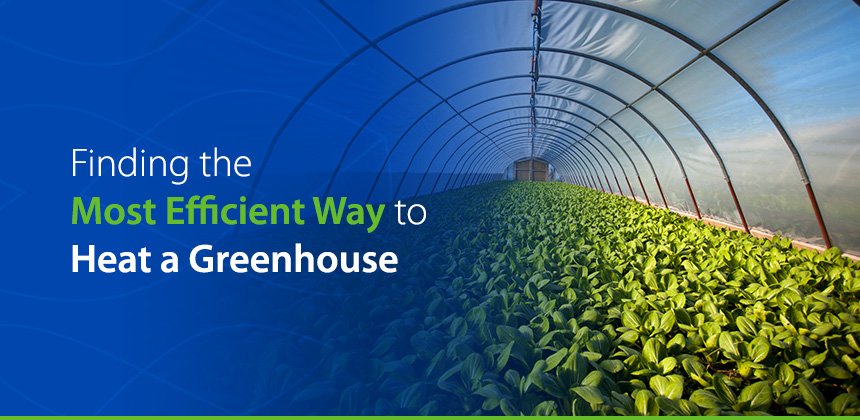
Efficiently heating your greenhouse means finding a method that works without breaking the bank. Keeping your plants at the correct temperature is essential, but finding ways to save money is equally vital. Fuel suppliers often have multiple plans to help you find something within your budget while providing quality heating for your greenhouse.
Below, you’ll learn about the different ways to heat greenhouses and methods to boost your cost-efficiency to get the most out of your heating system and greenhouse.
Heating your greenhouse in the winter is essential to protect plants from the harsh cold. While some people believe greenhouses can produce adequate heat in the winter since they often feel warmer than outdoor temperatures, many greenhouses cannot produce the heat plants need in a harsh winter.
Instead, you should invest in heating to protect tender plants from the cold. However, it’s crucial to do the job right, especially amid rising energy costs and environmental concerns. Below you’ll learn more about the best way to heat a greenhouse and how you can reduce overall costs.
When you want to heat your greenhouse, you have numerous options. Some options are more costly than others but do an excellent job heating your greenhouse, while others are affordable and efficient. Consider your options below to help you make an informed decision about ways to heat a greenhouse:
When considering your heating options, you want to find the most efficient way to heat a greenhouse without sacrificing cost. There are ways to improve cost-efficiency so you can get the best heating your budget allows.
The first step in improving the cost-efficiency of your greenhouse heating system is looking into a new furnace or heating equipment. Older equipment doesn’t often perform at peak efficiency, costing more in the long run. New or nearly new equipment can significantly reduce overall costs while lasting far longer than an outdated machine.
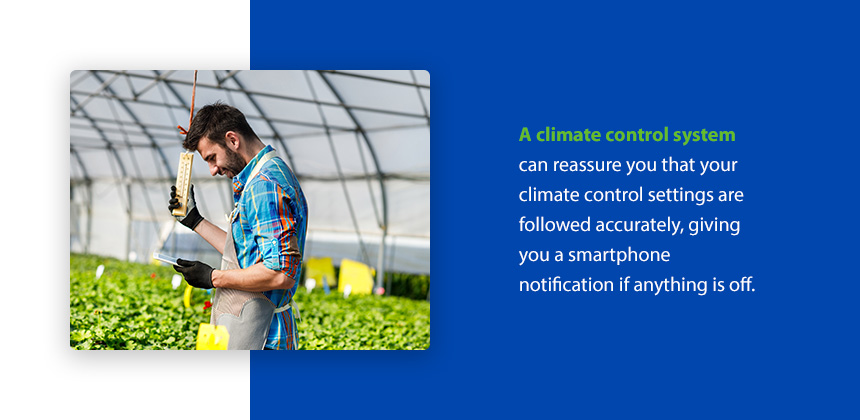
A climate control system will initially cost a bit of money, but it can help you save more during the cold season. A climate control system can reassure you that your climate control settings are followed accurately, giving you a smartphone notification if anything is off.
Climate control systems follow your unique settings and adapt to changing weather conditions, including wind, rain, sun or cloud cover. You can continue to work on other things without worrying about running to your greenhouse every 30 minutes or so to make adjustments due to the weather. Climate control systems do more than manage your heating and cooling. They can also control humidity and, in some cases, irrigation.
Another benefit of these climate control systems is that you can monitor informational graphs that measure humidity, temperature and irrigation. Review these measurements at the end of each week and make any necessary adjustments. Once you know what you consume monthly, you can make changes to improve cost efficiency.
Learning how to manage airflow and insulation is essential to reduce your heating costs. Insulation helps keep warm air trapped inside your greenhouse, while airflow helps circulate the warm air throughout your entire greenhouse, making it easier to have an even temperature and heat your crops.
Depending on your greenhouse’s climate, you may need thicker or thinner insulation. Choosing the proper insulation will also assist in airflow, helping keep circulating air trapped inside so it can warm cold-sensitive plants and level your heating costs. You can even place circulating fans at the top of your greenhouse to keep rising warm air from escaping.
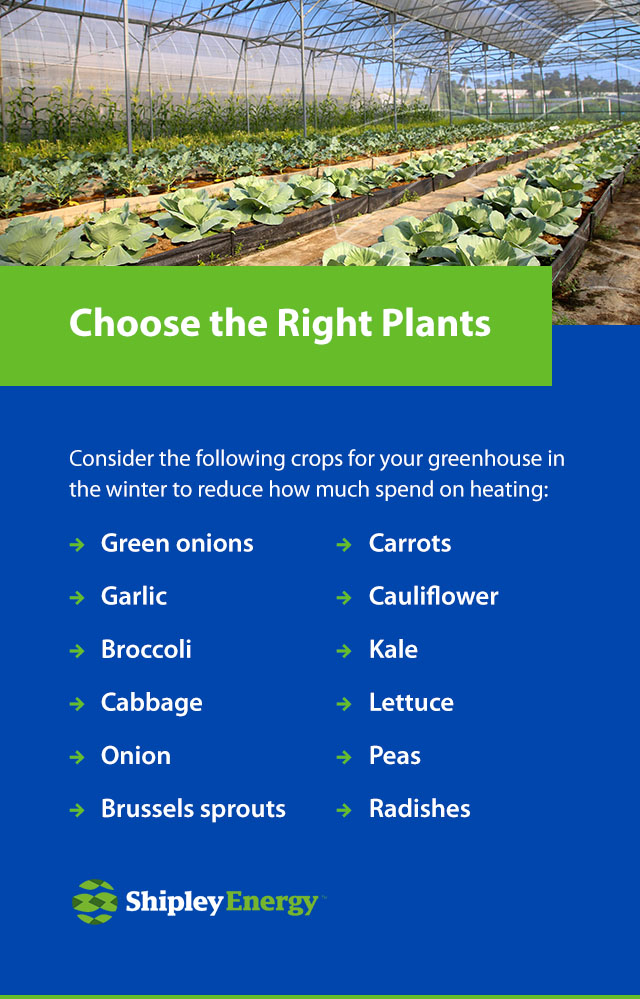
Some plants do better in the cold than others. Plants like peppers and tomatoes require significant heat to grow well. Other plants do just fine in the cold and don’t require as much heating. Consider the following crops for your greenhouse in the winter to reduce how much spend on heating:
These crops and many others are cold-weather tolerant. You can significantly reduce how much heating you need to invest in by choosing the appropriate plants for the winter season.
Thermal mass refers to the ability that different materials have to absorb heat. You can add additional materials to your greenhouse to improve heat retention, especially if you use kerosene or electric heaters. Adding thermal mass reduces how often you run your heaters, lowering your monthly heating costs. Some materials you can add to your greenhouse to help retain heat include:
You can increase thermal mass by adding stone, gravel or brick walkways, lining beds with brick, adding extra soil or setting water jugs by your beds.
Another way to insulate your soil is by adding a top layer of mulch. The mulch will help keep the heat trapped in the soil and can be more effective than just insulating your greenhouse structure. You can purchase mulch with high insulation protection or save money by utilizing evergreens, dead leaves or grass clippings.
You can also retain heat by covering rows. The covers let the heat from the soil radiate to the plant’s foliage. Row covers use thin material to allow sunlight in without letting heat escape. Depending on what type of row covers you choose, you might have to monitor your plants to ensure they don’t oversaturate, leading to fungal growth. You can also prevent oversaturation by removing the covers on warmer days.
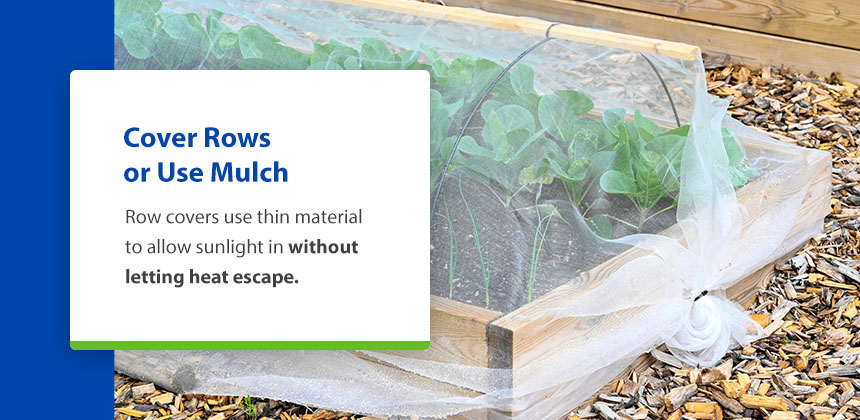
Now that you know how to improve your greenhouse heating to reduce costs, it’s time to utilize different tips to help you purchase heating fuels and reduce overall costs. Whether you choose natural gas, propane or oil, there are various ways you can save.
Natural gas is often one of the most affordable fuels due to companies increasing their pipelines and introducing fracking. Natural gas costs are made up of different factors, including:
Some growers have reduced their natural gas costs by switching some of their natural gas heaters to propane. Using a few propane heaters with natural gas heaters can reduce overall costs, especially for demand charges. You can use propane on peak cold nights so you don’t have to pay the high demand charge.
You can also use duel fuel burners that utilize natural gas or oil and easily change from one fuel to the other, reducing high-demand charges. Bundling purchases with a fuel supplier can also help you save.
You have different pricing and delivery options when choosing propane and oil. Many fuel suppliers have similar plans for both types of heating fuel, letting you explore different plans to fit your business’s needs and budget. Exploring plans ensures you get the most for your dollar. Plans include:
You can choose the best plan for heating a greenhouse while helping you save money. A qualified and reliable supplier should be able to guide you through their programs to ensure you get the best plan for your fuel needs that fit within your budget.
We know how important it is to find the correct heating method for your greenhouse to ensure the health of your crop. Shipley Energy consistently helps customers find the information they need to find the best price and heating options. We offer electricity, natural gas, propane and heating oil to give you plenty of opportunities for heating your greenhouse.
We also offer various fuel services to ensure you can save time and money on the job. We prioritize our customer’s needs, whether commercial or residential owners. Contact us today to learn more about our services and how we help you make a difference!